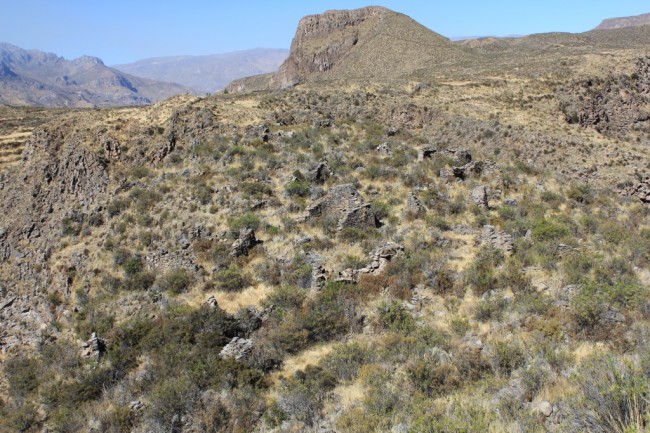Proyecto Arqueologico Pukaras de Colca
The Proyecto Arqueologico Pukaras de Colca (PAPC) seeks to understand how long-term social and political processes of polity formation and colonization were negotiated in a landscape of warfare. This research is situated in the dynamic political landscape of the Colca Valley in southern highland Peru, where a proliferation of hilltop fortifications during the Late Intermediate Period (1000 – 1400 CE) signals a period of frequent conflict.
This multi-scalar research focused on a 1200 km2 region in the central and upper Colca Valley in the southern Peruvian highlands, which was home to the Collaguas, a large pre-Inka ethnic polity. The first season of fieldwork conducted in 2012 consisted of intensive survey of fortifications across the region. Our survey documented a total of 33 hilltop fortifications, ranging from small fortified outposts to large fortified settlements with more than 200 structures.

The site of Auquimarka, a fortified settlement, with a view of Pukara, another fortified site, in the background
Sites were mapped using a custom mobile GIS program which allowed for detailed architectural mapping in the field. You can read more about the mobile GIS data collection system used here.
The 2013 field season was focused on the excavation of the site of Auquimarka, fortified site whose occupation spanned the Late Intermediate Period (~1000 – 1450 CE) and the Late Horizon (~1450 – 1532 CE). During this field season we excavated 15 households along with several key public spaces, including the Inka kallanka and associated plaza.



©2024 Vanderbilt University ·
Site Development: University Web Communications